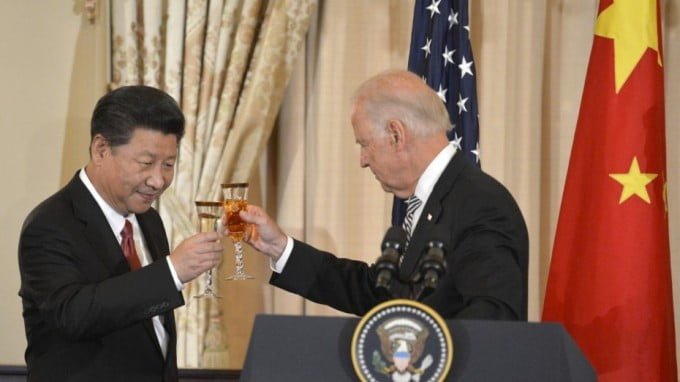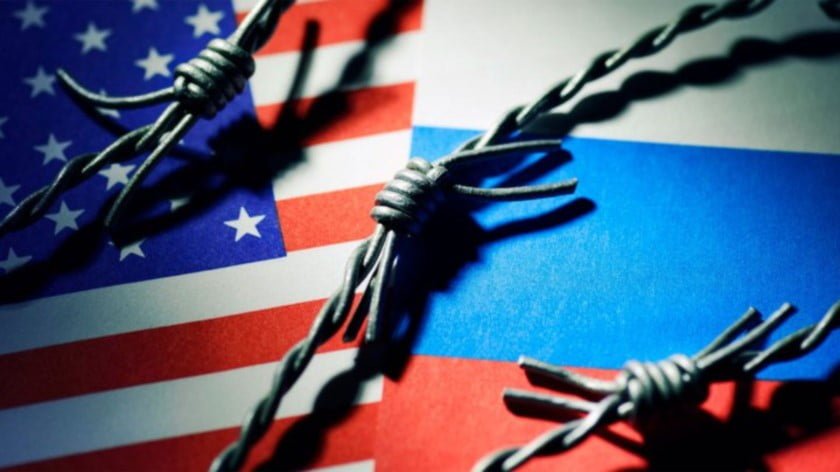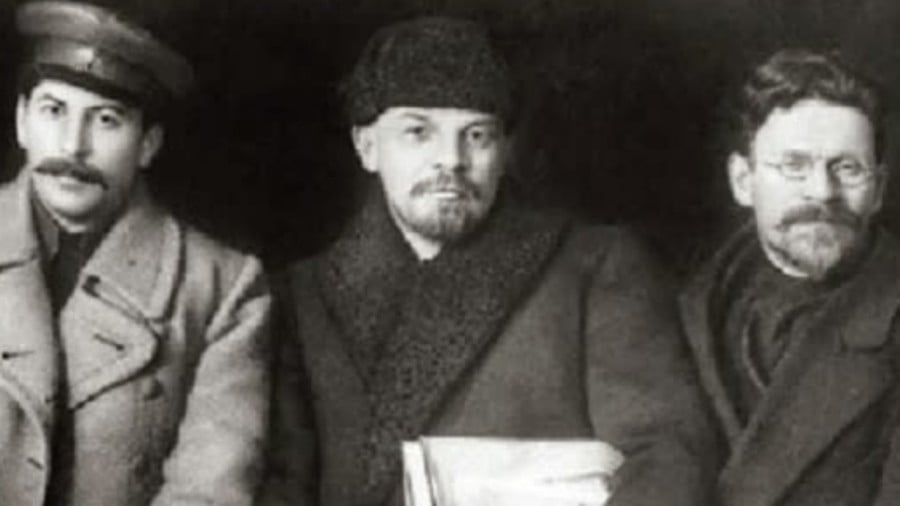Why F-16 Fighter Jets to Ukraine Exposes NATO’s Weak Hand
In recent weeks, the United States and its NATO allies have begun discussions about providing Ukraine with a wider array of weaponry ranging from Western main battle tanks and longer-range munitions, to even Western warplanes.
The “doubling down” by the West comes at a time when NATO’s stockpiles of Soviet-era equipment runs dry and even inventories of Western artillery pieces and the ammunition they require dwindle or disappear.
The prospect of sending Ukraine Western warplanes, and Lockheed Martin’s F-16 fighter jet in particular, stems from the fact that likewise, there are no longer any Soviet-era warplanes available to transfer to Ukraine. Worse still, there is growing impetus to do so specifically as a substitute for the West’s inability to send basic weapons like artillery Ukraine actually needs.
Warplanes: The Latest Bluff
Rather than warplanes being the next logical step in a winning strategy of support by the West for Ukraine, talk about sending Western warplanes to Ukraine is a part of growing desperation from a West running out of the practical means to continue its proxy war with Russia in Ukraine.
This discussion is fueled by article like Reuters’ “Ukraine says pilots would need six months for F-16 combat training,” which claims:
Ukraine said on Friday it would take its pilots about half a year to train for combat in Western fighter jets such as U.S. F-16s, as Kyiv steps up its campaign to secure fourth-generation warplanes in the wake of Russia’s invasion last February.
Ukraine got a huge boost this week when Germany and the United States announced plans to provide heavy tanks to Kyiv, which is now hoping the West will also provide long-range missiles and fighter jets.
Indeed, inflated claims regarding Western main battle tanks helped encourage equally inflated talk about next supplying Ukraine with Western warplanes. The Western media talked for weeks about the supposed “game-changing” nature of the collective pledges of Western main battle tanks from across NATO to Ukraine.
But this notion that Western main battle tanks would arrive in the quantities and represent a quality required to outfight Russian forces on the battlefield quickly evaporated as even Western analysts pointed out the steep learning curve Ukrainian tank crews faced in operating them, the fact that such tanks require combined arms capabilities including military aviation to be used to their full potential, and have maintenance and logistic requirements Ukraine is unable to meet.
Articles like Bloomberg’s, “Ukraine to Receive Fewer Battle Tanks From Allies Than Promised,” would dampen expectations regarding even the quantity of tanks originally pledged.
Now, a similar cycle of hope and despair has begun surrounding the issue of sending Western warplanes.
Shattered Dreams
First, the UK on its official government website in an announcement titled, “PM extends Ukraine military training to pilots and marines as President Zelenskyy makes first visit to the UK since Russian invasion,” would claim:
As part of today’s talks, the Prime Minister will offer to bolster the UK’s training offer for Ukrainian troops, including expanding it to fighter jet pilots to ensure Ukraine can defend its skies well into the future.
The training will ensure pilots are able to fly sophisticated NATO-standard fighter jets in the future. As part of that long-term capability investment, the UK will work with Ukraine and international allies to coordinate collective support to meet Ukraine’s defensive needs.
While this gave hope to Kiev that Western warplanes were on the table, further UK government announcements would clarify just what “in the future” meant. It meant many years from now, and only after the conflict concluded.
Reuters in its article, “’No magic wand’ in Ukraine war, says UK’s Wallace on question of supplying jets,” would admit that it would take at least 35 months (nearly 3 years) to train pilots to fly British warplanes, not “six months.”
A recent article by Air & Space Forces Magazine titled, “Romania Is a Model for Training Ukraine’s Pilots to Fly F-16s,” would further elaborate on how complex the process of adopting new warplanes was for any particular nation, implying just how impractical talk is of supplying Ukraine with Western warplanes anytime in the near future.
The article would point out:
Romania joined the NATO Partnership for Peace in 1994 shortly after independence and became a full NATO member 10 years later. Each step was a shift to the Western way of warfare.
From trained pilots and maintainers to required infrastructure to a boneyard of spare aircraft, Romania has been working on its transition to the F-16 for nearly a decade.
The article would also quote a Romanian Air Force pilot, who claimed:
Even we struggle at this point, and we started enhancing and getting the F-16 like seven or eight years ago, and we’re still not yet there.
It is clear that while announcing the sending of Western tanks and warplanes to Ukraine boosted morale and gave the general public the impression that Western foreign policy operated from a position of strength, those familiar with military matters realized just how weak the West’s hand actually is.
If NATO warplanes do appear over Ukraine any time soon, it can be assumed they are flown by NATO pilots, since according to even NATO itself there is no practical way Ukrainian pilots could.
Big Promises, Empty Hands
US President Joe Biden recently visited Kiev, Ukraine. In an article by the BBC titled, “Biden visits Zelensky in Kyiv and says Putin ‘dead wrong’ on Ukraine war,” it’s claimed:
The US will back Ukraine in its fight against Russia for “as long as it takes”, US President Joe Biden has said on an unannounced visit to Kyiv.
“We have every confidence you’re going to continue to prevail,” he said.
Mr Biden’s first trip to Ukraine as president came days before the first anniversary of Russia’s invasion.
He said that Russia’s President Vladimir Putin had been “dead wrong” to think Russia could outlast Ukraine and its Western allies.
Yet, what did President Biden bring with him besides mere rhetoric suggesting Russia couldn’t outlast the West? In fact, just as President Biden was visiting Kiev the US Department of Defense released a list of its most recent military assistance package to Ukraine.
It was notable not for the large amount of equipment in terms of variety and quantity, but specifically because the assistance was so meager. Many items on the list omitted any mention of quantity where in the past the Pentagon had provided such numbers.
Munitions like guided-rockets for HIMARS, 155mm artillery shells for Western artillery pieces, and even mortars and anti-tank weapons are all admittedly facing critical shortages.
If the US and its allies cannot announce further packages featuring weapons Ukraine can actually use on the battlefield, in the absence of a better alternative, it may seem like an attractive option to begin announcing the transfer of weapons Ukraine has no practical way of using effectively on the battlefield, such as Western main battle tanks and even NATO warplanes. Many across Western audiences may perceive this as an escalation or an increasingly strengthening hand the West is dealing Ukraine, but military experts on both sides of the frontline are well aware of how weak this hand actually is.
The announcement of tank deliveries being slashed both in terms of quantity and in terms of immediacy along with talk of “F-16s” Ukraine has no way to fly until the conflict ends, illustrates just how effective Russia’s strategy of attrition has been and how, contrary to what the US president declared recently in Kiev, Russia does seem quite capable of outlasting the West.
Condemned by the West for its “slow” progress in terms of territorial gains, Russia has instead succeeded in emptying both Ukraine’s and its Western sponsors’ arsenals in ways that will take years to restore.
Meanwhile the West admits that Russian military aviation is largely intact, according to Air & Space Forces Magazine’s article, “Russian Air Force ‘Has Lot of Capability Left’ One Year On From Ukraine Invasion.”
The Western media also admits that Russia has the ability to produce up to 850 tanks either modernized or made brand-new. Evident by frequent missile and drone strikes, Russia possesses a large capacity to build precision-guided weapons at rates higher than the West can provide Ukraine with the means to intercept.
Thus, when the West discusses weapons like F-16 fighter jets, it is most certainly not the strong hand the West hopes it comes across as being, but instead the best indicator yet of just how desperate matters have become in Washington, London, and Brussels and how empty their collective hands actually are.







